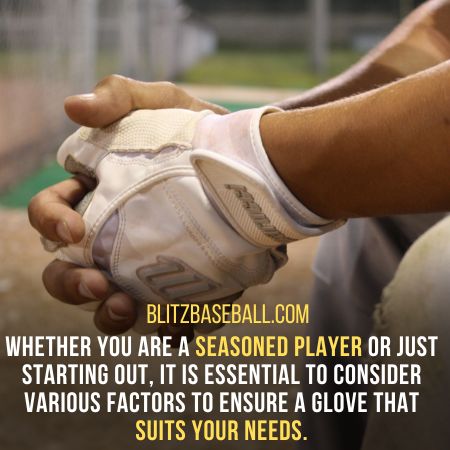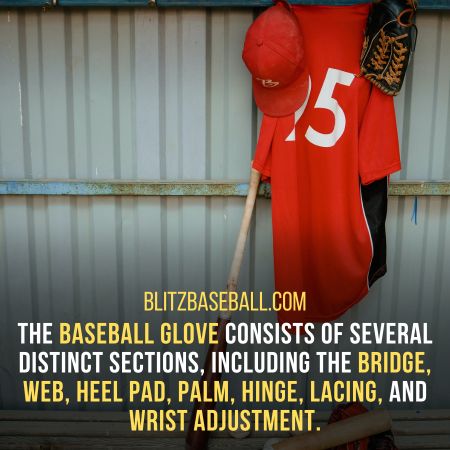Measuring your hand for a baseball glove is a crucial step in finding the perfect fit and ensuring optimal performance on the field.
This article offers valuable insights and tips from a professional on how to measure hand for baseball gloves accurately.
Whether you are a seasoned player or just starting out, it is essential to consider various factors to ensure a glove that suits your needs.
By considering important aspects such as age, position, and specific glove sections like the bridge, web, and palm, players can make informed decisions.
Moreover, the article emphasizes the significance of hand measurements, including the length of the index finger and hand circumference, when selecting the right glove size.
With comprehensive guidelines for different positions and recommendations for multipurpose gloves, this article serves as a valuable resource for players of all ages and skill levels.
Key Takeaways
- Importance of considering age and position when measuring for a baseball glove.
- Explanation of various web-based baseball glove patterns: basket, modified trapeze, H-web, I-web, trapeze, and two-piece.
- Hand size is important when choosing the right size glove.
- Measurement of glove size by excluding the thumb and measuring around the hand with the fullest part.
How To Measure Hand For Baseball Gloves? Things to Consider

When measuring the hand for baseball gloves, it is important to consider various factors such as age, position, and hand size, as well as the specific features and patterns of the glove that are suitable for different positions on the field.
Hand position plays a crucial role in determining the appropriate size and fit of the glove. Additionally, measuring the length of the thumb is essential to ensure a proper fit. The thumb should be able to comfortably reach the tip of the finger stalls without excessive strain or restriction.
This measurement helps determine the ideal size of the glove and ensures that the player has optimal control and mobility while wearing it.
By taking into account these factors, players can find a baseball glove that fits their hand correctly and enhances their performance on the field.
Different Sections
The baseball glove consists of several distinct sections, including the bridge, web, heel pad, palm, hinge, lacing, and wrist adjustment. These sections play a crucial role in the functionality and performance of the glove.
The web pattern, located between the thumb and index finger, is an important feature that varies among different gloves. Common web patterns include basket, modified trapeze, H-web, I-web, trapeze, and two-piece. The web pattern affects the glove’s ability to trap and secure the ball during catches.

Leather gloves are often preferred over synthetic gloves due to their durability and ability to break in and mold to the player’s hand. They also provide a better grip and feel for the ball.
The heel pad, palm, hinge, lacing, and wrist adjustment all contribute to the overall comfort, fit, and flexibility of the glove, allowing players to perform at their best on the field.
| Section | Description |
|---|---|
| Bridge | Connects the thumb and index finger |
| Web | Located between the thumb and index finger |
| Heel pad | Provides additional cushioning and support |
| Palm | The area where the ball is caught |
| Hinge | Allows flexibility in the glove |
| Lacing | Secures the different sections of the glove |
| Wrist adjustment | Allows for a customizable fit |
Choosing the Right Size
One important consideration when selecting a baseball glove is choosing the appropriate size for optimal performance and comfort. The hand size of the player plays a crucial role in determining the right glove size.
Measurement techniques for glove size typically involve excluding the thumb and measuring around the hand at its fullest part. This ensures a snug fit without being too tight or too loose.
It is essential to accurately measure the hand to avoid discomfort or hindered performance on the field. A well-fitted glove allows the player to have better control over the ball and reduces the risk of injury.
Therefore, taking the time to measure the hand accurately and selecting the right size is vital for an enjoyable and successful baseball experience.

Additional Tips
To ensure a comfortable and efficient fit, it is crucial to consider the desired level of stiffness in a baseball glove. The stiffness of a glove is determined by the material it is made of.
Leather gloves are known to be more durable and require a glove break-in period to achieve the desired level of flexibility. On the other hand, synthetic gloves are typically more flexible right out of the box.
It is important to note that left-handed players will need to select a glove specifically designed for their hand orientation. This means that the glove will have a reversed pattern, with the thumb and pinky finger positions switched.
Moreover, it is essential to take care of the glove and the right cleaning methods to ensure durability.
By taking into account the stiffness of the glove material and considering the correct hand orientation, players can ensure a proper and comfortable fit for optimal performance on the field.
